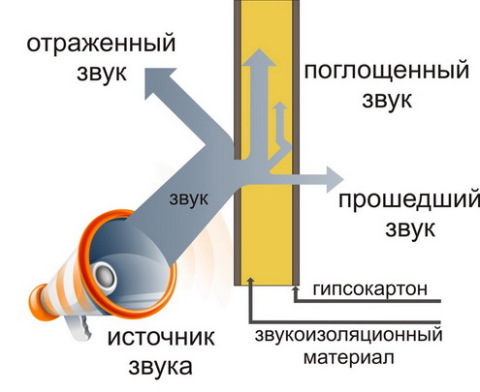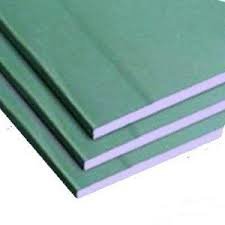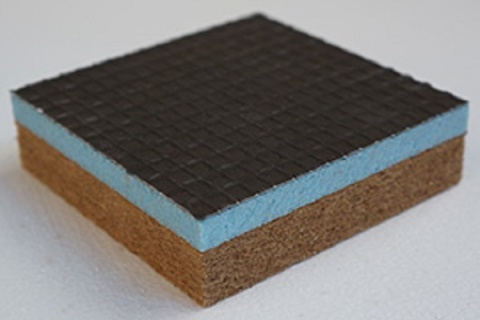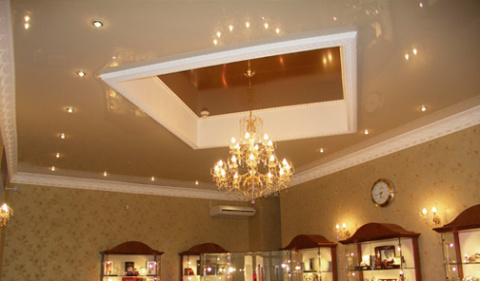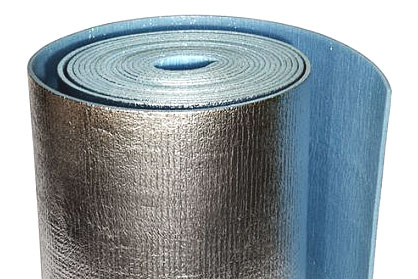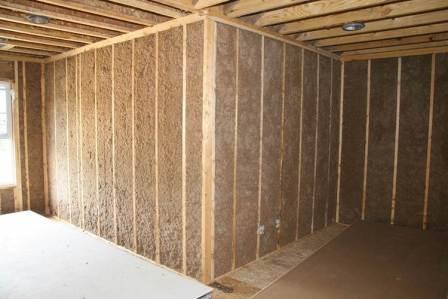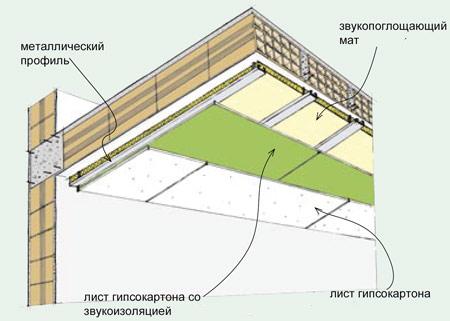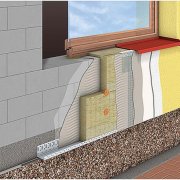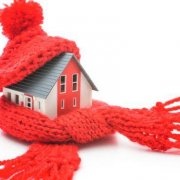Soundproofing walls: materials and integrated work
Sound insulation of walls is not at all complicated. But it is better to carry out this work at the construction stage. But this is not done so often. To a greater extent this is done by the owners themselves. How to make soundproofing of walls we will consider in this article.
Here there is a choice of several materials that are different in their composition and characteristics. The mounting system is also not the same, the instruction will help you understand this issue and make the right choice.
The content of the article
We are looking for the root cause of noise in the apartment
It is necessary to isolate the room from noise wisely. First, you need to decide what kind of noise you need to get rid of.
- If the source of disturbing sounds is at the neighbors, then soundproofing is required only from the side of the wall, which is adjacent to a noisy apartment (or only for the floor or ceiling, if the neighbors live a floor lower or higher).
- But if the desire to carefully isolate your apartment from noise is dictated by the need to protect neighbors from their own hobbies with loud music, movies or, for example, singing in karaoke, then security measures should be very serious. In this case, sound protection must be installed in compliance with all technological standards and only with high-quality materials.
Attention: It is not possible to make soundproofing of the room correctly by simply processing the walls. This is a set of work. After all, noise also penetrates through the ceiling and floor.
Sound Type Classification
The sound that is transmitted through the air. These are conversations, screams and other sounds that enter the apartment through door and window openings. Usually such sounds are not the most annoying. They have the effect of "accumulation".
If you hear a neighbor stirring sugar in tea only occasionally (at night, when there is silence throughout the house), this is not a cause for concern. But if you hear the creak of a neighboring parquet daily, then a decision about serious protection can save you in the future from mental health problems.
| Shock type sound | This is the noise made by construction and any other specialized equipment. For example, the sound of a punch. The method of getting such kind of noise into the premises is through the joints of walls and ceilings. The roar intensifies depending on the proximity of its source. This type of sound is considered the most dangerous and annoying. Amid such noise, the main conflicts between neighbors take place. |
| Structural Sound | It enters the premises through vibration and is similar to shock type sound. Often they are united, because the difference between them is only in the methods of transfer and getting into the apartment. |
| Structural sound | In this embodiment, not just sound is transmitted, but rather vibration. This comes from the movement of water in pipes. But we basically do not perceive this option as an annoying factor and we do not pay attention to it. |
Walls and ceilings made of good, soundproof materials protect owners of apartments in apartment buildings as much as possible from noise of any type. However, often with multi-story construction, the quality of the materials leaves much to be desired.
Noise protection is practically zero. And the trouble of city dwellers is not only in loud singing or TV sounds.Often the cause of nervous breakdowns are endless repairs of neighbors. Impact noises can haunt residents not only in the immediate vicinity, but also from neighboring entrances.
What materials will help get rid of noise in the apartment
For walls, sound insulation is sold in retail chains and must be selected according to the noise source and type of mounting. The best soundproofing of the walls will be the one that with a minimum loss of usable area will save you from extraneous sounds.
The following materials are available on the sales market:
Gypsocarnon | When deciding to use a material such as drywall, pre-prepare the wall surface. Any cracks need to be closed. It is through them that noise passes. And if you leave them in this form and just close them with drywall - the situation with noise in the apartment is unlikely to change for the better. After processing the cracks, it is necessary to plaster everything well (seeHow to do wall plastering with your own hands).
The situation will turn into a stalemate. Therefore, use only the ceiling mount (the frame also attaches to the floor) next to the restless wall. Professionals add rubber gaskets to increase protection - noise does not pass through them even in places of fastening. |
Insulation Panels | A special design to protect the room from extraneous sounds is called ZIPS. This design is multi-layered and does not require installation of the frame. A panel system with special soundproofing characteristics is attached to the surface using small holes. It is good to lay such panels with ecowool. Then the room will be guaranteed soundproof, and live in it will be comfortable. |
Soundproof ceiling slabs | If the noise source is at the top and it is the neighbors from above that bother with extraneous sounds or repairs, then soundproofing plates for walls will help to protect your nervous system. They provide excellent noise isolation thanks to the basalt fiber that forms the basis of this material. Panels are popular for their wide range of colors and variety of designs. In addition to solving the problem of noise, the use of this material can update the interior of the apartment. |
Suspended ceilings | Installation of suspended ceilings, as well as ceiling panels, is used when there is a noise source on the upper floors. If extraneous sounds penetrate the ceiling, then the acoustic properties of all types of suspended ceilings brilliantly cope with this problem. Installation technology and specifications imply complete protection against noise from neighbors. |
Sound insulation | Roll materials are made with a special film that absorbs sounds well. They are fastened with glue "bustilat". But the surface before installation needs to be prepared, to achieve evenness and smoothness. |
You can choose the right material yourself, using the experience of the same neighbors or repair technicians. The market offers a wide variety of materials with suitable properties. Do not save on quality. Calm and comfort of coexistence with neighbors in a high-rise building depends on well-chosen material.
How does the process of isolation from wall surface noise
Soundproofing the walls with your own hands is not so difficult, you must first select the material for work and fully comply with the installation technology. We immediately determine the room and the place where the noise comes from the most and we install the soundproofing of the walls in the following order.
Attention: Today there is a liquid soundproofing of the walls.But this product can only be used as an extra. It is applied between the panels and is used for tight bonding of surfaces.
Soundproofing of walls without a frame and with its installation can be done. The system of work will depend on the chosen method. We’ll talk about this in detail below.
Wall preparation
Any cracks on the surface, cracks in the joints and any other places that may let noise into the apartment must be puttied (seeHow to putty the walls with your own hands, observing all the rules) Putty is mandatory at the preliminary stage of work, it is thanks to it that the wall will cease to let noise from its neighbors pass.
- If the noise is not large, then thin soundproofing of the walls can be done. For this, a self-adhesive soundproofing is on sale. It is sold in roll form and no frame will need to be installed to install it. And soundproofing film for walls can be applied directly to the plane.
- But if the noise is large and the walls are thin, then the most effective sound insulation will be done with the installation of the frame. In this case, there will be more work, and you will lose the usable area, but with proper work, you will not have any noise.
You should also check the sockets and isolate them correctly:
- Turn off the electricity (so that there is no short circuit);
- Disassemble the mechanism and fill the hole in the wall with mineral wool (or other non-combustible material, for example, fiberglass);
- Cover with gypsum (or other building mixture).
Upon completion of work with outlets, it is necessary to isolate all the pipes in the room and make their sealing. Usually it is the pipes that are the source of loud noise. Through them, the sound goes through the riser of the house to all floors. All joints must be sealed with sealant, without missing a single joint with the wall. Choose a sealant that is resistant to temperature extremes.
If you have chosen a wireframe method of work. Then you need to determine the material of the frame and its installation.
You can choose the following:
Wood frame | The wooden frame is not difficult to install. The tree is easy to process, and you can make all the transitions pretty quickly.
|
Metal carcass | The price of metal will be higher from the first option, but it is more durable. It is especially relevant to use in unheated rooms, as well as in high humidity. |
At the next stage, the order of work is governed by the materials that are selected for work.
How is the process of isolation from ceiling noise
To begin with, by analogy with the walls, you need to attach a frame. It is in it that the material with the necessary characteristics (absorption of sounds) will be laid. Frame profiles, as well as with walls, cannot be fastened closely. Use the mount on a floating type or use high-quality and expensive suspension with vibration isolation.
To fix the ceiling of drywall on a floating type, you must perform the following steps:
- On the wall you need to fix the corners (shelf from 7 to 10 cm) using anchors. Stacked timber. Between it and the corner should be laid rubberized gasket.
- The frame is attached to the bars perpendicularly.
- Profiles must be fixed so that they can be adjusted if necessary. This method of attaching a plasterboard ceiling is considered to be “floating”.
- A material is laid in the frame that has the properties of sound insulation (the same as for walls).
Attention: It is important to note that the drywall construction will take about 18 cm of height at the premises.
In case it is necessary to mount noise insulation on the stretch ceiling, the material is mounted on dowels, and then standard installation of the stretch ceiling is carried out. This simplicity is due to the fact that the stretch ceiling is not directly attached to the main one.
Apply drywall
Soundproofing of interior walls is often done with this particular material. It is quite simply processed, and you get a ready-made even plane.
In addition to the drywall sheets themselves, you must buy:
- slats made of wood or plastic (a profile is also suitable for drywall);
- hardware (they will fasten the profile);
- sound absorption layer;
- self-tapping screws.
After preliminary preparation of the surface, common to all types of materials, you need to make a frame (seeDo-it-yourself installation of a frame for drywall on a wall).
- About 2 centimeters need to be retreated from the wall, the profile cannot be fixed to the surface itself, a rubberized gasket must be placed under it.
- Mineral wool is already laid under the frame, which will be a buffer for passing sound into the room (you can also use glass wool).
- When choosing a material, focus only on the characteristics of the sound absorption level.
- Drywall is attached to the profile with self-tapping screws. At the final stage of the work, it is necessary to carefully glue the joints, putty them and finish the surface.
Wall panels (decorative)
Panels are chosen very often due to their characteristics and an abundance of options, both color and design. In addition, it is this material that is considered the simplest for work to eliminate unnecessary noise. If the wall has an uneven surface, then the panels are attached to the crate using the "liquid" nails popular with builders.
Advantages of using panels:
- A wealth of colors and finishes;
- Profitability
- High quality sound insulation (on par with drywall, but much cheaper);
- Low weight of the panel;
- Convenience and speed of installation.
If the entire apartment is soundproofed, there is no better solution. Panels can transform the interior and become its main focus.
- Some are afraid of losing space when using such material. But the losses are so insignificant that no one eventually notices them.
- But the effect of the room, decorated with wall panels, can exceed the wildest desires of the owners of the house. Not wanting to, they can simply transform the whole atmosphere in the apartment with a simple transformation.
Wall insulation
This option is convenient and practical.
- Roll material with special properties is glued to the wall as well as wallpaper. You need to purchase only special adhesives and the whole process will take no more than a couple of hours.
- This option can be called temporary. It is not suitable for rooms for which serious requests are made by their owners.
- If repair is not possible in principle, then you can use this roll pasting. Noise will not decrease much - about 50%.
Attention: The rolling method is good for rented housing, when tenants are tired of the noise of neighbors, but cannot (and should not) make a full repair.
How is the process of isolation from floor noise
If you want to protect the floor from the penetration of extraneous sounds into the room, then preliminary preparation of its surface will be similar to the ceiling. That is, thoroughly process joints and cracks. Then use the floating type tie method. Such a screed does not have corners, like its classic version.
Materials for floor insulation are used other than the ceiling and walls. Stone (or basalt) cotton wool is relevant here.
Process technology:
- Leveling and cleaning the surface;
- Gaskets with vibration isolation are mounted on liquid nails around the entire perimeter;
- according to the lighthouse method, stone wool is laid (it is important to cover it with polyethylene);
- The dry screed should be ready in a ratio of 1 to 3 (water should not come out of it when pressed), it is poured onto the base, and a reinforcing mesh is put on top, another layer of the mixture is poured on it (about 2 cm);
- Beacons are removed after leveling.The floor must be sanded with a special grater and remove excess edge remnants.
To get rid of extraneous sounds and restore peace and silence in your home, you do not need to make major overhauls. It is necessary to carefully analyze the building materials market, ask builders questions, and talk with neighbors.
Calculate the budget and finally decide. The work that needs to be done to protect your home from noise is not as laborious as it might seem at first glance.
Sound insulation of walls and partitions is completely done with their own hands, without involving expensive construction crews. The main thing is not to neglect common sense and the technique of working with selected materials. The video in this article and the photo will help to do everything efficiently and quickly.

